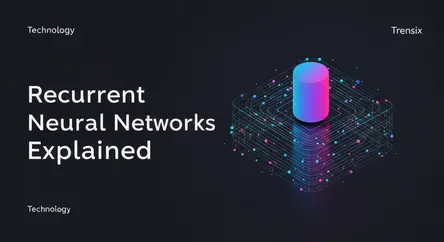Technology
Recurrent Neural Networks Explained

Discover Recurrent Neural Networks (RNNs), a type of AI that processes sequential data like text and speech, powering chatbots and voice assistants.
What is it?
A Recurrent Neural Network (RNN) is a class of artificial neural network designed to recognize patterns in sequences of data, such as text, speech, or time-series financial data. Unlike standard feedforward networks, RNNs have feedback loops, allowing them to maintain an internal state or "memory." This memory enables the network to use information from prior inputs to influence the current input and output. Think of it as reading a sentence; an RNN processes words one by one but remembers the context from the previous words to understand the full meaning. This makes them exceptionally powerful for tasks where context and order are crucial.
Why is it trending?
RNNs are foundational to many AI breakthroughs, especially in Natural Language Processing (NLP). Their ability to handle sequential information has made them the backbone for technologies like machine translation, sentiment analysis, and speech recognition. While more advanced architectures like LSTMs and Transformers have emerged, they are built upon the core concept of processing data sequentially with memory. The explosion of chatbots, voice assistants, and sophisticated language models has kept the principles behind RNNs at the forefront of AI research and development, ensuring their continued relevance.
How does it affect people?
RNNs are quietly integrated into many daily technologies. When your smartphone keyboard suggests the next word you might type, that's often an RNN-based model at work. Voice assistants like Siri and Google Assistant use them to understand your spoken commands. Online translation services use them to convert sentences from one language to another while preserving context. They also power features like automatic captioning on videos and are used in finance for stock market prediction. In essence, RNNs help machines understand the sequential nature of human language, making our interactions with technology more natural and intelligent.